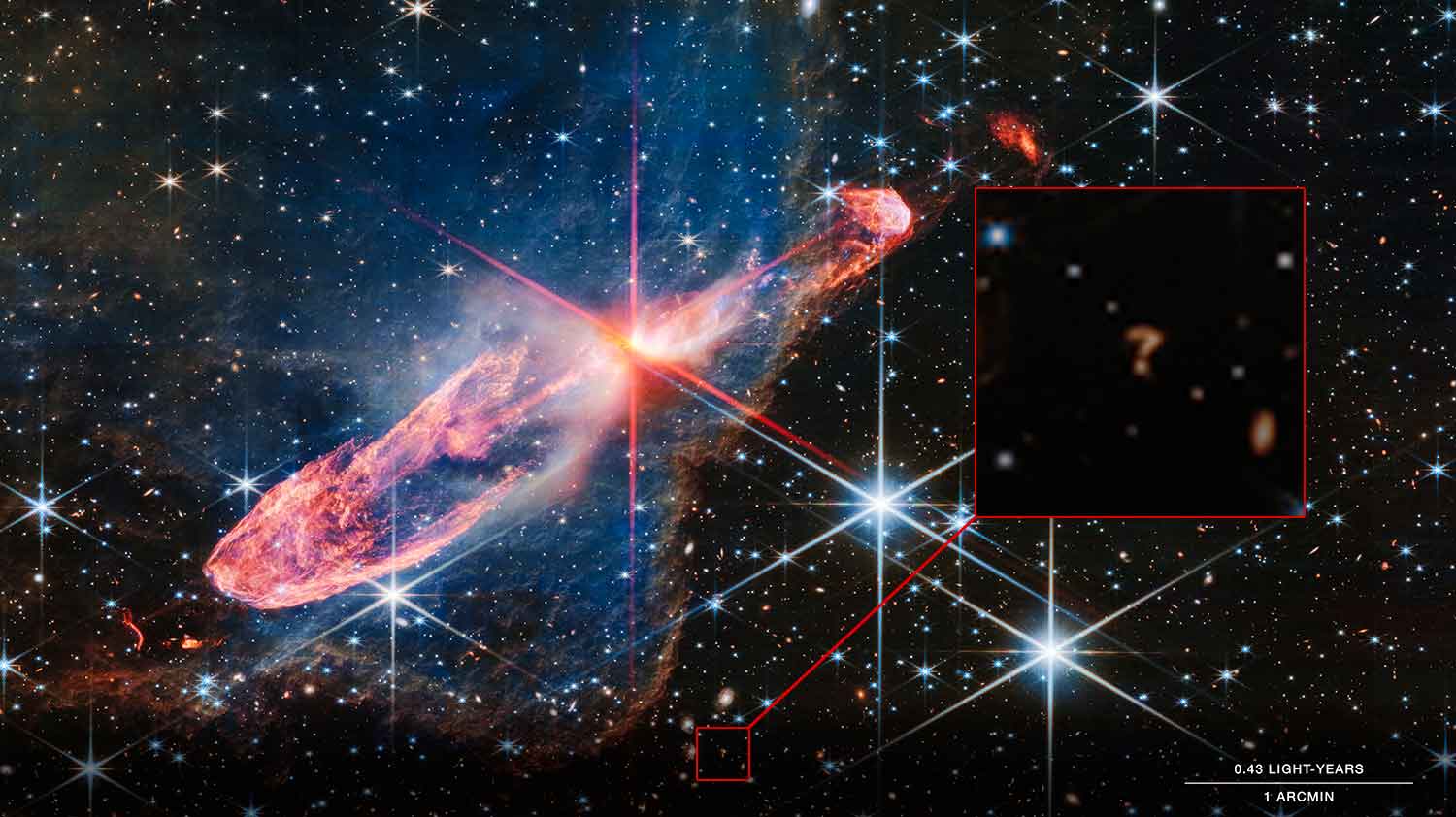Is That a Question Mark?
A recent image from space seems to show a question mark. But it’s not a message from aliens.

© NASA, ESA, CSA, J. DePasquale (STScI)
The James Webb Space Telescope captured this image, which includes what looks like a question mark.
The James Webb Space Telescope has given us some amazing images, and a few surprises. When some sharp-eyed people noticed what looked like a question mark in the background of a recent Webb image, it raised some, well, questions. Is there something in space that’s shaped like a question mark? Could this be a message from aliens? Scientists have answers.
What looks like a question mark is actually two or more galaxies that are in the process of merging, or coming together. Galaxies merge quite often, scientists say. In fact, between 10 and 25 percent of galaxies are merging at any given time. Our own Milky Way galaxy is the product of a merger.
“Many people think of galaxies like these little islands in space that don’t move, but nothing in the universe can be pinned down,” Matt Caplan, an assistant professor of physics at Illinois State University, told CBS News. “Stars move as they orbit the galaxy, and the galaxy—being made of gas and stars—moves whatever direction the gravity of nearby galaxies pulls it. The same is true of our Sun and Milky Way.”
Nora Luetzgendorf of the European Space Agency believes that the arc of the question mark might be a tidal tail, a shape that forms due to the gravitational interaction between two galaxies. The dot might be another, smaller galaxy.
While galaxies merge quite often, we don’t often get to see it happen—which makes this question mark special, even if it’s not a message from aliens.
Macarena Garcia Marin is a Webb project scientist with the Space Telescope Science Institute, which manages the telescope’s science operations. “I think we all enjoy finding familiar shapes in the sky; that creates a deep connection between our human-experience and language in this case (a question mark!) and the beauty of the Universe surrounding us,” Garcia Marin told National Public Radio. “To me it brings the question of how many other interesting objects are out there waiting to be explored with Webb!”



